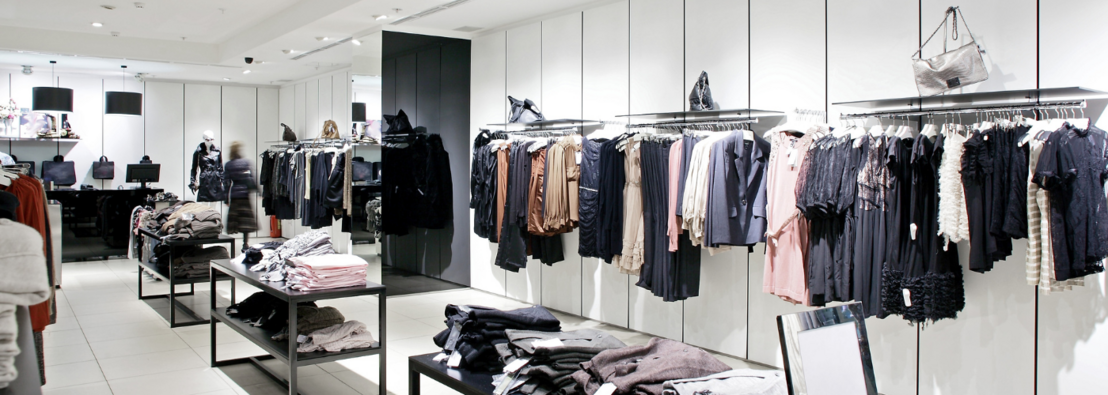Shopping Wortschatz in Englisch
Der Wortschatz zum Thema Shopping bezieht sich auf die spezifischen Wörter und Ausdrücke, die üblicherweise verwendet werden, wenn man über das Einkaufen spricht oder einkauft. Er umfasst eine Reihe von Begriffen, die mit dem Einkaufen zusammenhängen. Dieses Vokabular zu kennen und zu verstehen, kann Ihnen helfen, Ihre Bedürfnisse effektiv zu kommunizieren, die Richtlinien der Geschäfte zu verstehen und Ihren Einkauf zu steuern. Der Lebensmitteleinkauf zum Beispiel ist ein wichtiger Aspekt des täglichen Lebens, so dass das Erlernen dieses Vokabulars das Einkaufen erleichtern kann.
Vokabellisten zum Shoppen mit englischen Definitionen
Mit fortgeschrittenen Englischkenntnissen solltest du unbedingt auch mit englischen Definitionen lernen. Deshalb haben wir dir nicht die deutsche Übersetzung unserer Einkaufsvokabelliste gegeben, sondern die englische Definition des jeweiligen Fachbegriffs. Versuche, die englische Definition des Wortes zu verstehen. Dies wird dir helfen, deinen Wortschatz in der englischen Sprache langfristig zu verbessern.

Vokabeln für den Lebensmitteleinkauf
| Word | Explanation |
|---|---|
| Produce | Refers to fresh fruits and vegetables that are typically found in the grocery store's produce section. |
| Dairy | Refers to products made from milk, such as milk itself, cheese, yogurt, and butter. |
| Meat | Refers to different types of animal flesh that are commonly consumed, including chicken, beef, and pork. |
| Canned goods | Refers to food items that have been processed, cooked, and sealed in cans for preservation. Examples include canned soups, beans, and tomatoes. |
| Bakery | Refers to a section in a store where bread, pastries, cakes, and other baked goods are sold. |
| Frozen foods | Refers to food products that have been frozen to extend their shelf life, including frozen vegetables, fruits, and ice cream. |
| Pantry staples | Refers to essential food items that are commonly used in cooking and are typically stored in the pantry. Examples include flour, sugar, rice, pasta, and cooking oil. |
| Condiments | Refers to sauces, dressings, and spices used to enhance the flavor of food. Examples include ketchup, mustard, mayonnaise, soy sauce, and various herbs and spices. |
| Snacks | Refers to ready-to-eat food items that are usually consumed between meals. Examples include chips, cookies, nuts, and popcorn. |
| Beverages | Refers to drinks that are consumed for refreshment or hydration. Examples include water, soda, juice, tea, and coffee. |
| Breakfast cereals | Refers to packaged grains or oats that are typically consumed with milk or yogurt for breakfast. Examples include cornflakes, granola, and oatmeal. |
| Deli | Refers to the section of the grocery store where sliced meats, cheeses, and prepared salads are sold. |
| Organic | Refers to food products that are grown or produced without the use of synthetic fertilizers, pesticides, or genetically modified organisms (GMOs). |
| Gluten-free | Refers to food products that do not contain gluten, a protein found in wheat, barley, and rye, catering to individuals with gluten sensitivities or celiac disease. |
| Vegan | Refers to food products that are free of animal-derived ingredients, suitable for individuals following a plant-based diet. |
| International foods | Refers to food products from various countries or regions around the world, representing different cuisines and flavors. Examples include Mexican, Italian, Indian, or Asian food sections. |
| Baking supplies | Refers to ingredients and tools used for baking, such as baking powder, baking soda, yeast, cake mixes, and baking pans. |
| Sweeteners | Refers to alternatives to sugar used to sweeten food and beverages. Examples include honey, maple syrup, and artificial sweeteners like stevia or sucralose. |
| Dairy alternatives | Refers to plant-based alternatives to traditional dairy products, suitable for individuals with lactose intolerance or those following a vegan diet. Examples include almond milk, soy milk, and coconut yogurt. |
| Fresh seafood | Refers to a variety of fish, shellfish, and other aquatic creatures that are sold fresh in the seafood section of the grocery store. |
| Spreads | Refers to products that can be spread on bread or crackers, such as peanut butter, jam, and chocolate spread. |
| Baby products | Refers to items specifically designed for infants and young children, including baby food, diapers, wipes, and baby formula. |
| Canned beverages | Refers to drinks that are packaged in cans, such as soda, energy drinks, and canned juices. |
| Pet food | Refers to food products specially formulated for dogs, cats, or other pets, available in various brands and flavors. |
| Fresh herbs | Refers to aromatic plants used to add flavor to dishes, such as basil, cilantro, mint, and rosemary. |
| Cleaning supplies | Refers to products used for household cleaning, including multi-purpose cleaners, disinfectants, laundry detergent, and paper towels. |

Vokabeln für das Einkaufen von Kleidung
| Word | Explanation |
|---|---|
| Tops | Refers to the upper garments or clothing items worn on the upper body, such as shirts, blouses, and t-shirts. |
| Bottoms | Refers to clothing items worn on the lower body, including pants, skirts, and jeans. |
| Footwear | Refers to shoes or any type of covering worn on the feet, such as shoes, boots, and sandals. |
| Accessories | Refers to items that complement or enhance an outfit, such as jewelry, hats, scarves, and belts |
| Dresses | Refers to one-piece garments that typically cover the upper body and extend down to the legs, often worn by women on formal or casual occasions. |
| Suits | Refers to a set of matching jacket and trousers or skirt, typically worn by both men and women for formal or professional occasions. |
| Outerwear | Refers to garments worn over other clothes to provide warmth and protection from the elements, such as coats, jackets, and sweaters. |
| Swimwear | Refers to clothing designed for swimming or sunbathing, including swimsuits, bikinis, and trunks. |
| Underwear | Refers to undergarments worn next to the skin, including bras, panties, boxers, briefs, and undershirts. |
| Activewear | Refers to clothing designed for physical activities and exercise, such as workout leggings, sports bras, and athletic shorts. |
| Formalwear | Refers to clothing suitable for formal events or occasions, such as tuxedos, evening gowns, and cocktail dresses. |
| Casualwear | Refers to comfortable and relaxed clothing suitable for everyday wear, such as jeans, t-shirts, and casual dresses. |
| Footwear | Refers to various types of shoes and boots, including sneakers, sandals, heels, loafers, and boots. |
| Accessories | Refers to items that complement or enhance an outfit, such as belts, scarves, hats, gloves, sunglasses, and handbags. |
| Lingerie | Refers to women's undergarments that are more delicate and often designed to be visually appealing, including lace bras, panties, and negligees. |
| Maternity wear | Refers to clothing designed specifically for pregnant women, providing comfort and accommodating the changes in the body during pregnancy. |
| Plus-size clothing | Refers to clothing designed for individuals who wear larger sizes, typically beyond the standard range, offering inclusive and comfortable options. |
| Active footwear | Refers to shoes designed for athletic activities, such as running shoes, cross-training shoes, and hiking boots. |
| Sleepwear | Refers to clothing worn for sleeping or lounging, including pajamas, nightgowns, and sleep shirts. |
| Formal shoes | Refers to dress shoes suitable for formal occasions, such as oxfords, loafers, and heels. |
| Casual shoes | Refers to comfortable shoes suitable for everyday wear, such as sneakers, flats, and sandals. |
| Sportswear | Refers to clothing designed specifically for sports and athletic activities, including jerseys, shorts, and sports bras. |
| Denim | Refers to a sturdy cotton fabric used to make jeans and other clothing items, known for its durability and versatility. |
| Trendy fashion | Refers to clothing and styles that are currently popular or fashionable, often reflecting the latest trends and influences from the fashion industry. |

Vokabeln für das Einkaufen in der Elektronik
| Word | Explanation |
|---|---|
| Computers | Refers to electronic devices used for various purposes, including laptops, desktop computers, and tablets. |
| Mobile devices | Refers to portable electronic devices typically used for communication and access to information, such as smartphones and tablets. |
| Entertainment | Refers to electronic devices or equipment used for leisure activities, such as televisions, speakers, and headphones. |
| Appliances | Refers to electrical or mechanical devices used for specific household functions, such as refrigerators and washing machines. |
| Smartphones | Refers to mobile phones that have advanced features such as internet connectivity, touchscreens, and various applications. |
| Laptops | Refers to portable computers that can be used for work, entertainment, and other tasks, typically featuring a keyboard and a display screen. |
| Tablets | Refers to handheld devices with a touchscreen display, larger than a smartphone but smaller than a laptop, often used for browsing, reading, and multimedia consumption. |
| Televisions | Refers to electronic devices used for viewing broadcasted programs, movies, and other visual content, available in various sizes and technologies such as LCD, LED, or OLED. |
| Speakers | Refers to audio devices used to produce sound, ranging from small portable speakers to larger home theater systems. |
| Headphones | Refers to audio devices worn over the ears or inserted into the ears to listen to audio privately, available in different styles such as over-ear, on-ear, and in-ear. |
| Gaming Consoles | Refers to dedicated gaming devices used to play video games, such as PlayStation, Xbox, or Nintendo consoles. |
| Cameras | Refers to devices used to capture photographs or videos, including digital cameras, DSLRs, mirrorless cameras, and action cameras. |
| Smartwatches | Refers to wearable devices that can connect to smartphones and provide features like notifications, fitness tracking, and other applications. |
| Fitness Trackers | Refers to wearable devices that monitor and track fitness-related metrics, such as steps taken, heart rate, sleep patterns, and calories burned. |
| Home Assistants | Refers to voice-activated smart devices that can perform various tasks, answer questions, and control other smart home devices, such as Amazon Echo or Google Home. |
| Gaming Accessories | Refers to additional equipment used to enhance the gaming experience, such as game controllers, gaming keyboards, gaming mice, and virtual reality (VR) headsets. |
| Printers | Refers to devices used for producing physical copies of documents or images, available in various types such as inkjet printers or laser printers. |
| Monitors | Refers to displays used for computers, laptops, or gaming consoles, available in different sizes and resolutions. |
| External Hard Drives | Refers to portable storage devices used to store and backup data, offering additional space beyond the computer's internal storage. |
| Wireless Earphones | Refers to small, wireless audio devices that can be used to listen to music or make calls, such as Bluetooth earphones or true wireless earbuds. |
| Smart Home Devices | Refers to devices that can be connected to the internet and controlled remotely, such as smart thermostats, smart lighting systems, or smart security cameras. |
| VR (Virtual Reality) Systems | Refers to systems that create an immersive virtual reality experience using a combination of hardware and software, often involving a VR headset and controllers. |
| Drones | Refers to unmanned aerial vehicles used for various purposes, such as aerial photography, videography, or recreational flying. |
| Computer Accessories | Refers to additional peripherals and accessories for computers, such as keyboards, mice, external hard drives, webcams, and USB hubs. |
Effektives Lernen des englischen Wortschatzes
Du bist auf der Suche nach weiteren englischen Vokabeln zum Lernen? Hier wirst du fündig!

Vokabeln aus dem Bereich Heimwerken
| Word | Explanation |
|---|---|
| Living room | Refers to the common area in a house where people relax and socialize, typically furnished with items such as sofas, coffee tables, and bookshelves. |
| Bedroom | Refers to the room in a house where one sleeps, typically containing items such as beds, dressers, and nightstands. |
| Dining room | Refers to the room in a house where meals are eaten, typically furnished with a dining table and chairs. |
| Office | Refers to a space designated for work or study, often equipped with items such as desks, office chairs, and filing cabinets. |
| Sofas | Refers to upholstered seating furniture designed for comfort, typically with a backrest and armrests, used in living rooms, lounges, or common areas. |
| Dining Tables | Refers to tables specifically designed for dining and eating meals, often accompanied by dining chairs. |
| Beds | Refers to furniture used for sleeping and resting, available in various sizes and styles such as single, double, queen, or king beds. |
| Wardrobes | Refers to freestanding or built-in closets used for storing clothes and other personal belongings, often featuring hanging rails, shelves, and drawers. |
| Desks | Refers to furniture designed for working or studying, typically with a flat surface and space for a computer or writing materials. |
| Bookcases | Refers to shelving units or furniture designed for storing books, often featuring multiple shelves and compartments. |
| Coffee Tables | Refers to low tables placed in front of sofas or seating areas, used for holding beverages, books, and other items. |
| Cabinets | Refers to storage furniture with doors or drawers, used to store various items, such as kitchen supplies, electronics, or clothing. |
| Lighting Fixtures | Refers to various types of lights used to illuminate spaces, including ceiling lights, table lamps, floor lamps, and wall sconces. |
| Rugs | Refers to floor coverings made of various materials, used to add warmth and decorative elements to rooms. |
| Curtains | Refers to fabric window coverings used for privacy, light control, and decoration. |
| Bathroom Fixtures | Refers to items installed in bathrooms, including sinks, toilets, bathtubs, showers, and bathroom cabinets. |
| Kitchen Appliances | Refers to electrical or mechanical devices used in the kitchen for cooking, food preparation, and storage, such as refrigerators, ovens, stoves, dishwashers, and microwaves. |
| Paint | Refers to liquid substances used to add color and protect surfaces, such as walls, ceilings, and furniture, available in various colors and finishes. |
| Power Tools | Refers to handheld or stationary tools powered by electricity or batteries, used for various home improvement tasks, such as drills, saws, sanders, and power screwdrivers. |
| Hand Tools | Refers to manually operated tools used for various tasks, including hammers, screwdrivers, wrenches, pliers, and measuring tapes. |
| Tiles | Refers to flat, thin pieces of ceramic, stone, or other materials used to cover floors, walls, or countertops, available in various sizes, colors, and patterns. |
| Bathroom Accessories | Refers to various items used to enhance the functionality and aesthetics of bathrooms, such as towel racks, soap dispensers, shower curtains, and bathroom mirrors. |
| Outdoor Furniture | Refers to furniture designed for outdoor use, such as patio sets, outdoor sofas, dining tables, and lounge chairs. |
| Home Decor | Refers to decorative items used to enhance the style and ambiance of a home, including artwork, vases, decorative pillows, and wall hangings. |

Vokabeln zum Online-Shopping
| Word | Explanation |
|---|---|
| E-commerce | Refers to the buying and selling of goods and services over the internet, conducted through online platforms or websites. |
| Online Store | Refers to a website or virtual platform where products or services are displayed and sold to customers online. |
| Shopping Cart | Refers to a virtual cart or basket on an online store where selected items are stored before proceeding to the checkout process. |
| Product Listing | Refers to a detailed description of a product or service displayed on an online store, including images, specifications, and pricing information. |
| Add to Cart | Refers to the action of selecting and placing an item into the virtual shopping cart for purchase. |
| Checkout | Refers to the process of finalizing a purchase on an online store by providing payment and shipping information. |
| Payment Gateway | Refers to a secure online service that processes and authorizes credit card or electronic payment transactions. |
| Shipping | Refers to the process of delivering purchased items to the customer's specified address, often involving shipping carriers such as FedEx, UPS, or USPS. |
| Tracking Number | Refers to a unique identification number provided to the customer for tracking the progress and location of a shipped package. |
| Delivery | Refers to the act of transporting and delivering purchased items to the customer's specified location. |
| Return Policy | Refers to the guidelines and procedures set by an online store regarding the return and refund of purchased items. |
| Customer Reviews | Refers to feedback and opinions shared by customers who have purchased and used a product or service, often influencing the purchasing decisions of other customers. |
| Wishlist | Refers to a personalized list of desired items created by a user on an online store for future reference or potential purchase. |
| Discount Codes | Refers to alphanumeric codes that customers can enter during the checkout process to obtain discounts or special offers on their purchases. |
| Customer Support | Refers to assistance and service provided to customers before, during, and after the online shopping process, often through live chat, email, or phone. |
| Account | Refers to a personalized user account created on an online store, allowing customers to store their information, view order history, and track shipments. |
| Shopping App | Refers to a mobile application that allows customers to browse and purchase products or services from an online store using their smartphones or tablets. |
| Flash Sale | Refers to a limited-time promotion where products are offered at a significantly discounted price, often creating a sense of urgency for customers to make a purchase. |
| Cyber Monday | Refers to the Monday following the Thanksgiving holiday in the United States, known for online retailers offering significant discounts and promotions. |
| Virtual Try-On | Refers to a feature or technology that allows customers to virtually try on clothing, accessories, or cosmetics online, providing a visual representation of how the product would look on them. |
